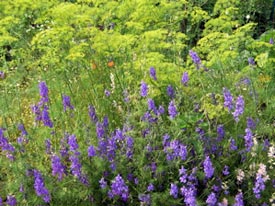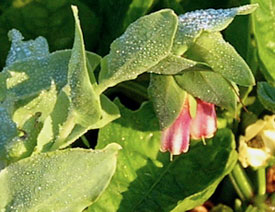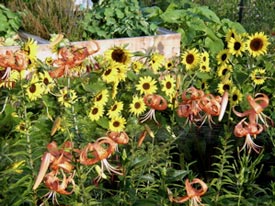
A pack of larkspur seeds gives big rewards.
November is a good time to take stock of your garden. Cold weather and reduced sunlight are bringing the growing season to a close for many, but even for those in mild climates, now is the time to assess failures and successes while they are still fresh in your mind. Take stock of how well certain techniques and products worked, evaluate how productive different varieties were, and note any pest outbreaks that you might need to take action to control next year.
Go into this assessment objectively to get the most benefit. For example, I love sunflowers but I have to put my affinity aside when judging. This year I meticulously weeded and coddled a row of 'Sunflower Jr.', a dwarf cultivar that was supposed to put on a spectacular show. Well, they bloomed magnificently for about a week in August. After that, spent flowers and grasshoppers turned them raggedy-looking. If I had not written this down and just looked at the gorgeous photo next spring, I may have been tempted to replant them. By making notes now, I won't completely forget the 12 weeks of work that it took to get that one week of beauty. I have already jotted down my intention to substitute colorful, long-blooming zinnias for dwarf sunflowers next year. So long, beloved sunflowers.
Create your own chart to help keep track of information. I use a computer spreadsheet but a pen and paper will do. Below is a example.
| Plant | Location | Foliage | Flowers | Bloom Time | Fruit | Qty. of Fruit | Pests | 2008 Rating |
| 'Sunflower Jr.' | Raised berm | Coarse | Big, beautiful | August, one week | - | - | Grass-hoppers | Below average |

Cerinthe hasn't proved its worth in my garden.
List all plantings to decide how well they performed. There is no need to spend $12 on a high-maintenance delphinium next year if its show didn't excite you this year. Perhaps a $2 pack of larkspur seeds would work better. My tiny bell peppers planted in May barely had time to mature and fruit before frost. Now I know for next year to start with much larger transplants if I hope to harvest a lot of bell peppers. Keeping a record of the garden also helps with crop rotation.
Review new products, as well. How did the tomato cages hold up? Did the new folding square cages work well? Is it time to recycle all those raggedy, rusty, round ones? Did the water nozzle leak? Are the containers big enough to hold adequate moisture and nutrients for the plants? Are the containers decorative enough to enhance the overall beauty of the garden?
What weeds or pests or plants got out of hand? This helps you plan your strategy for next year. You can take care of minor problems before they become major outbreaks. I already have the beginning of a management plan for 2009:

Dwarf sunflowers only looked this good for a week.
Specific information about your plants and garden conditions helps you determine the future of your landscape. By next spring you may have forgotten that the pride-of-Gibraltar (Cerinthe) had small, insignificant flowers in a wishy-washy mauve color and a rangy, straggling habit. In case I lose my memory, the chart will help me to remember to never grow this plant and waste precious space again. Plants that performed well can be rewarded with division or propagation by another method.
All this information helps you create the garden you want. After a few years you can determine which plants perform best for you and which products help you the most. For me the goal is to create a healthy, vigorous garden that does not require high maintenance and continual inputs to be gorgeous and productive. I may never attain that mystical prize, but like Ponce de Leon, I will keep searching and trying.
Garden evaluations are important for everyone, but particularly for small-space gardeners. We don't have enough room to accommodate underperforming plants or products. Unsightliness — a dying mass of peony foliage, an outbreak of powdery mildew, or a patch of bindweed — that which is easily overlooked in a large garden becomes a focal point in a small area. Year-end assessments can help us create productive, beautiful gardens that keep us happy.